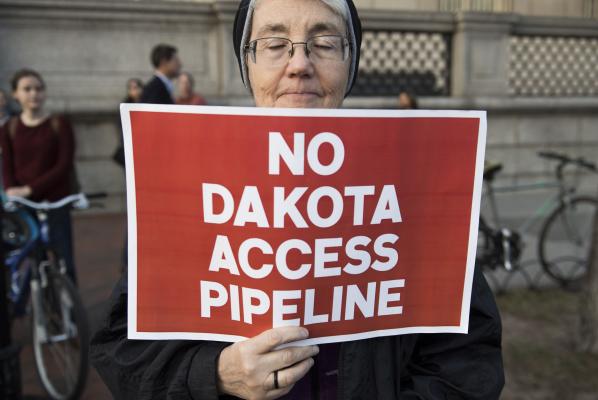
March 7 (UPI) — A federal judge Tuesday ruled against two Native American tribes in their attempt to prevent construction of the final section of the 1,170-mile Dakota Access Pipeline.
U.S. District Judge James Boasberg ruled against the Cheyenne River Sioux and Standing Rock Sioux tribes’ request for an injunction on religious grounds.
He rejected the tribes’ argument that the U.S. Army Corps of Engineers didn’t engage in proper consultations on the pipeline’s path and said the Sioux hadn’t protested the pipeline for more than two years after knowing about the proposed route in Cannon Ball, N.D.
The two reservations are near each other — Cheyenne River is South Dakota and Standing Rock in North Dakota. The pipeline’s last piece will pass along the eastern border of both reservations under Lake Oahe on the Missouri River.
The tribes said water for religious ceremonies would be spiritually impure along the route.
“Only once Dakota Access had built up to the water’s edge and the Corps had granted the easement [for drilling] to proceed did Cheyenne River inform defendants that the pipeline was the realization of a long-held prophecy about a Black Snake and that the mere presence of oil in the pipeline under the lakebed would interfere with tribe’s members’ ability to engage in important religious practices,” the judge said.
He noted the tribe members still can engage in their ceremonies.
“Although the tribe’s members may feel unable to use the water from Lake Oahe in their religious ceremonies once the pipeline is operational, there is no specific ban on their religious exercise,” he said.
Last month, Boasberg denied the tribes’ request for an immediate halt to the pipeline construction, saying there was no imminent harm to the tribes as long as oil wasn’t flowing.
The tribes sought an injunction after the Corps of Engineers gave final approval to the project on Feb. 7. President Donald Trump signed an executive order four days after taking office on Jan. 20 that allowed pipeline work to resume.
The Obama administration had halted the project in early December.
Energy Transfer Partners’ $3.8 billion pipeline will move crude oil from the northern Plains to the Midwest and then on to the Gulf of Mexico.
“Trump and his friends at Big Oil have not won,” Standing Rock Chairman Dave Archambault said in a statement. “While this preliminary ruling is disappointing, it’s not surprising. The bigger legal battle is ahead –- we stand strong.”
He was referring to another legal matter before the judge on the tribes’ belief that the Army Corps improperly canceled its commitment to conduct an environmental impact review. No court date has been set for those arguments.
The Native Americans also have the support of Greenpeace.
Diana Best, the activists’ USA Climate & Energy campaigner, called the decision “a violation of human rights.”
“We stand with indigenous leadership and millions of people around the world in condemning this decision and the criminal Dakota Access Pipeline,” she said in a release. “The project violates the sovereignty of the Standing Rock Sioux Tribe, the National Environmental Protection Act, international conventions on the prior informed consent of indigenous peoples, and crystal clear moral imperatives that place the value of human life and the natural resources it depends upon over the interests of corporations.”
She added, “The Trump Administration may be propping up this project and its investors for now, but it and its backers risk losing all credibility among a global audience. It is up to the pipeline’s investors to decide on what side of history they wish to stand.”





